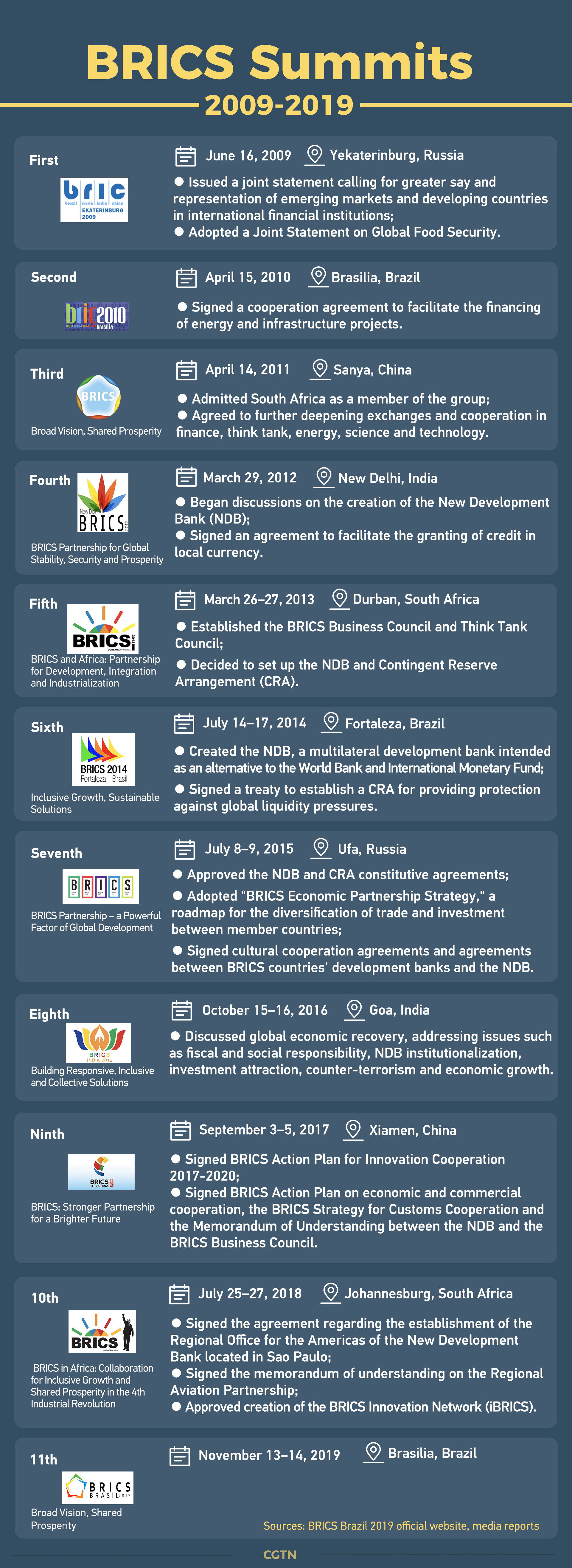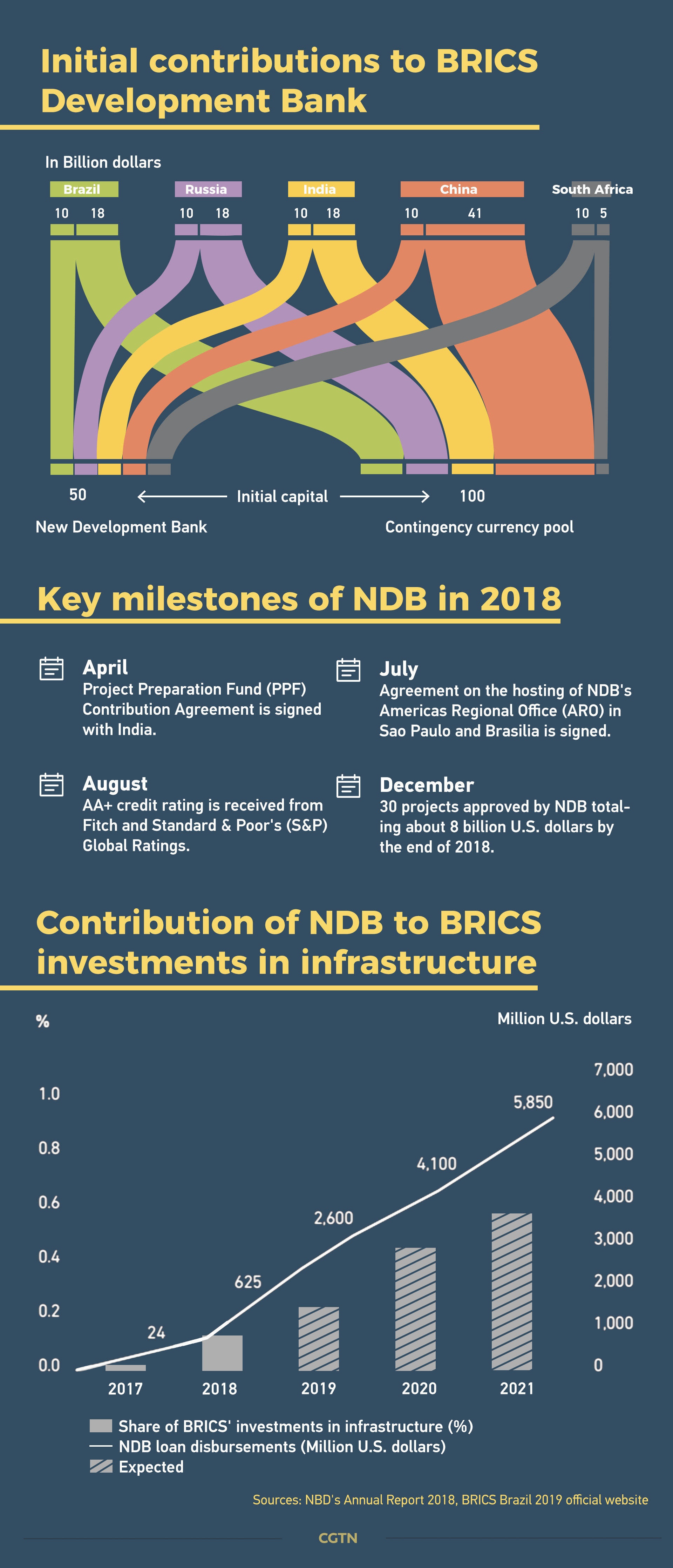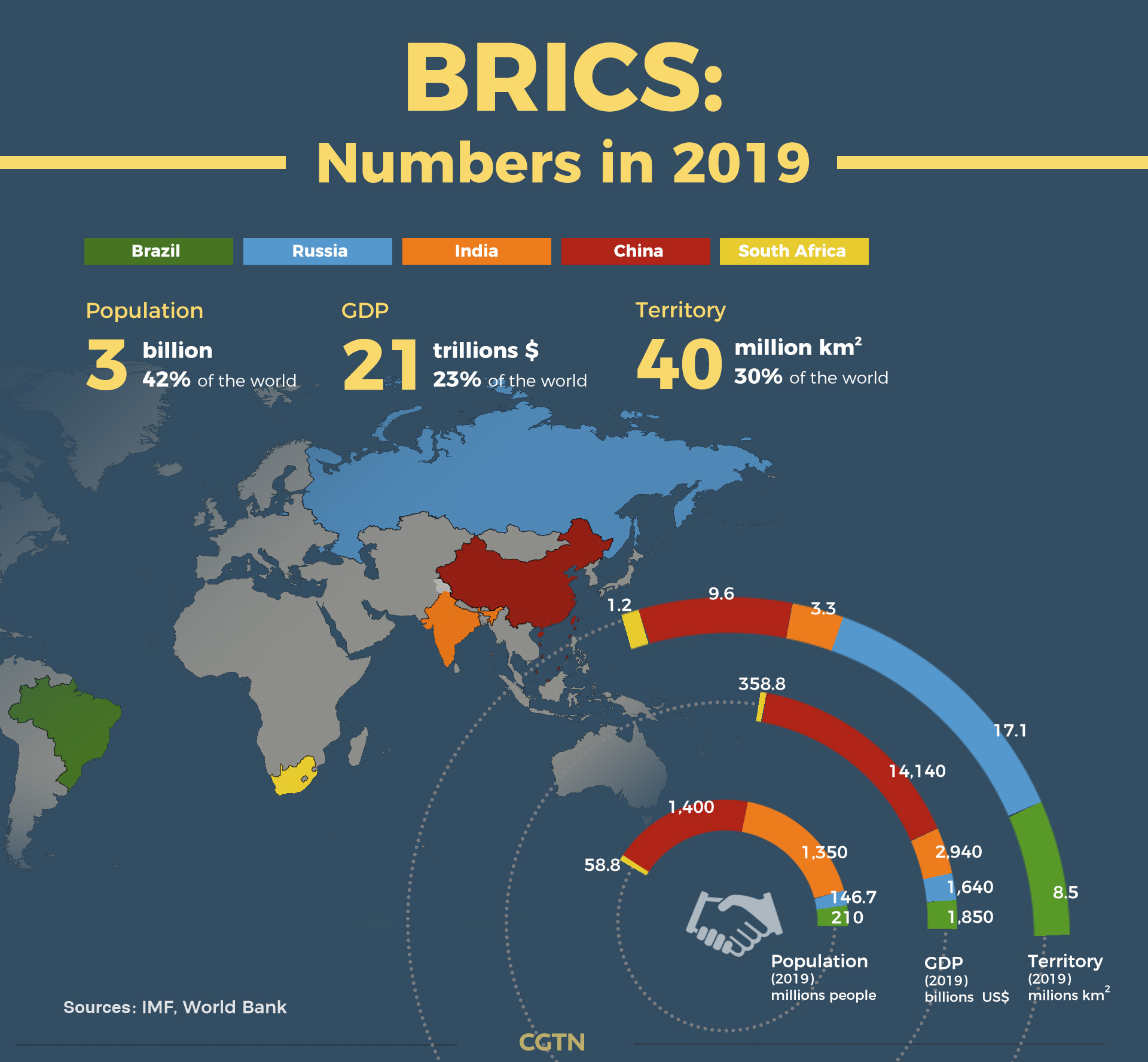The heads of state and government of all five BRICS nations are convening for the 11th BRICS Summit from Wednesday to Thursday in Brazil's capital city Brasilia.
This marks the first annual summit of the second decade of BRICS cooperation. These are some of the achievements of the first decade and the vision where the relationship is expected to go in the future:
The first decade of BRICS
BRICS' first decade saw each of the members laying down groundwork for cooperation, from identifying areas of convergence on political issues to improving economic ties. The level of engagement between its members, ranging from high-level summits and ministerial meetings to various working groups and conferences, has only deepened over that period.
Since 2009, the group has met annually at formal summits.

Main cooperation areas
Since its first summit in 2009, BRICS has established more than 30 cooperation areas. The most prominent are: economy and finance, health, science, technology and innovation, security and business. Altogether these initiatives have yielded fruitful and laudable outcomes, and provided concrete benefits.
Two of the most notable achievements of the BRICS have been the institutionalization of the New Development Bank (NDB), aimed at funding infrastructure projects in developing nations, and the Contingency Reserve Arrangement (CRA), which will help member countries forestall short-term liquidity pressure.

What to look for in the near future?
The NDB regional office for the Americas is set to be inaugurated in Sao Paulo, Brazil, with an office in Brasilia as well.
BRICS National Security Advisers (NSA) meeting and the working groups' activities will continue to be advanced. During the 2019 summit, the partners will discuss the continuation of current security cooperation as well as the focus on the fight against transnational crime.
BRICS also intends to draw closer the activities of the Business Council and the NDB, according to the statement of the 2019 Brazil summit.
Chinese Vice Foreign Minister Ma Zhaoxu said at last week's briefing that China hopes the summit can achieve fruitful results, which include deepening partnership and maintaining the positive momentum of BRICS cooperation, jointly safeguarding multilateralism, improving and strengthening global governance, and helping BRICS economic transformation.
Read more:
Xi Jinping to visit Greece, attend BRICS summit in Brazil
What is BRICS?
BRICS is the acronym for an association of five major emerging national economies: Brazil, Russia, India, China and South Africa.
The aim of the grouping was clear from its inception: to establish an equitable, democratic and multi-polar world order.
In 2009, the first BRIC summit (Brazil, Russia, India and China) was held in Yekaterinburg, Russia. In 2011, after the entry of South Africa, the "S" was added to the acronym and the grouping became known as BRICS.
How do the BRICS nations sit within the global economy?
